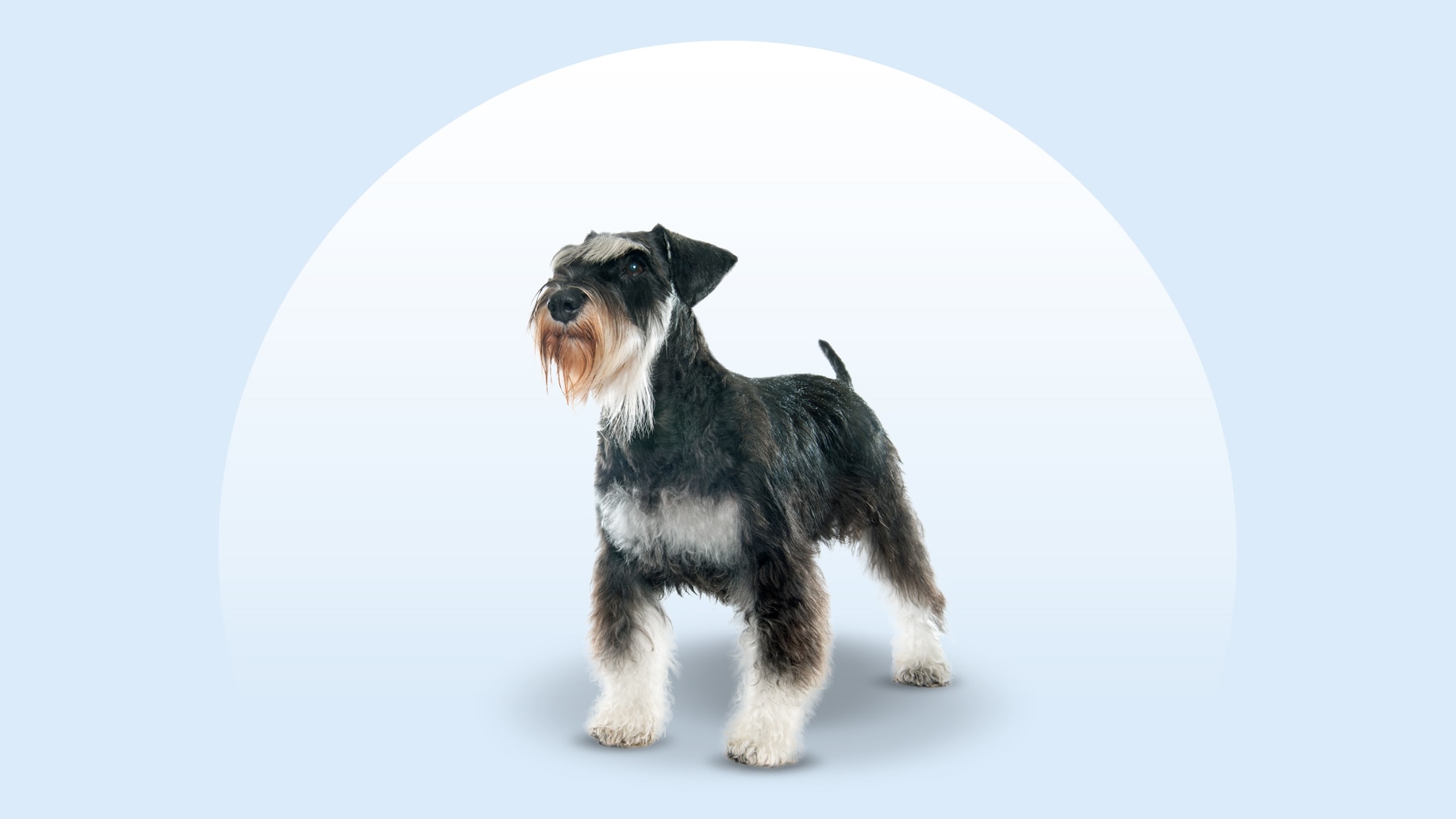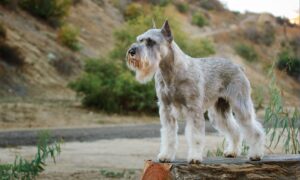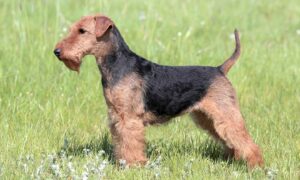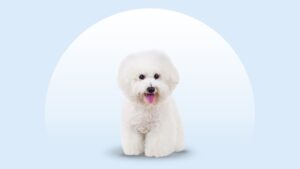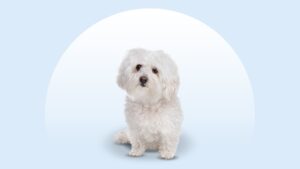Miniature Schnauzer
Updated September 19, 2025
Miniature Schnauzer
Updated September 19, 2025
With their wiry hair and adorably bushy eyebrows, Miniature Schnauzers are as friendly, intelligent, and lively as they are cute. They’ll adore being your constant companion—whether you’re heading to the dog park or the office—and they enjoy playful games as much as evening snuggles.
Adaptable, Friendly, Spirited
11–20 pounds
12–14 inches
12–15 years
Salt and Pepper, Black and Silver, Solid Black
Looking for a quintessentially fun dog to be your best friend? Meet the feisty and always-on-the-go Miniature Schnauzer.
This social little dog loves to make friends and will happily be a willing participant in all of your daily adventures. Their inquisitive eyes have an intellectual air, but let’s face it: While this dog is super smart, they’re having too much fun being the life of the party to be overly analytical.
A bright, friendly dog who’s ready for cuddles after a day of play, Miniature Schnauzers are the perfect small companion—and a big mood booster for the lucky pet parent they choose to call their own.
Miniature Schnauzer Characteristics
Miniature Schnauzer Appearance
With their perky, inquisitive ears and scruffy facial hair, the Miniature Schnauzer is a lively little dog who’s almost always in motion.
They’re built a lot like their Standard Schnauzer and Giant Schnauzer cousins, but in a much more compact package; the Miniature Schnauzer size is just 11–20 pounds.
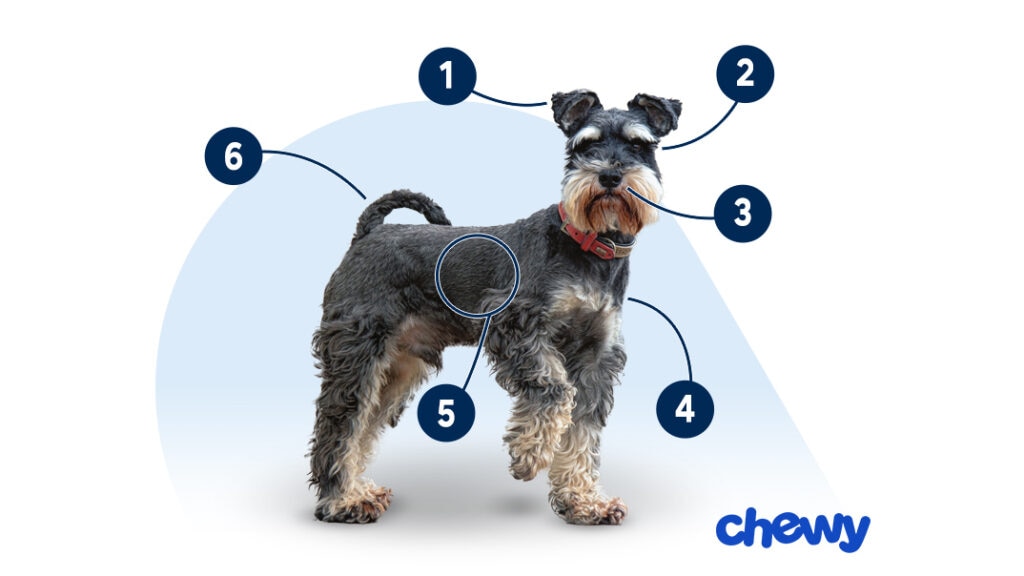
- Ears
While it was once common to crop ears, nowadays many choose to leave them as nature intended. Many groups, including the American Veterinary Medical Association, oppose ear cropping, and many countries as well as U.S. states have banned the practice. When left uncropped, the Schnauzer’s ears fold over into a triangle.
- Eyes
Bright, oval-shaped Miniature Schnauzer eyes are dark brown and deep-set.
- Nose
Their nose is solid black.
- Coat Length
The Miniature Schnauzer dog has a medium-length double coat: a hard and wiry top coat and a soft undercoat.
- Coat Color
Miniature Schnauzer color combos include salt and pepper (meaning the strands are banded), black and silver, and solid black.
- Tail
Tail cropping has also fallen out of fashion, and a natural Miniature Schnauzer tail is long and curls over their back. Many groups, including the American Veterinary Medical Association, oppose tail docking, and many countries as well as U.S. states have banned the practice.
Miniature Schnauzer Temperament
The Miniature Schnauzer may have a relatively small body, but this pup has a big personality.
They’re feisty yet affectionate, and they’ll happily snuggle with you for as long as you’ll let them—or until their always-on-the-go energy spikes and they absolutely must get their paws moving.
These pups are very attached to their person, so they want a home where they’re not left alone for long periods. If you can take them with you during the day, they’d love it—and chances are, they’ll be well-behaved, especially if they’re properly trained and socialized.
Miniature Schnauzers are always ready to play, and they’ll probably be great with kids, too. But again: your pup should be well-socialized with kids, and all kiddos must be taught how to interact with pups. Supervising child-doggy playtime is always a good idea.
They might get along with other pets, too, but Miniature Schnauzers can be a little aloof with strangers at first. It’s not because they’re unfriendly, but more so because they’re just so attached to their pet parent. But as soon as they see you welcome a guest, they’ll likely welcome them, too. They just want to follow your lead.
How to Care for a Miniature Schnauzer
Miniature Schnauzers are highly trainable, and their exercise needs are moderate. But grooming a Mini Schnauzer is a bigger task, and you might need to enlist a professional for extra help.
Grooming
Training
Diet
Exercise
Environment
Miniature Schnauzer Health
The average Miniature Schnauzer lifespan is 12–15 years. Here are some health issues to be aware of.
- Bladder stones: Miniature Schnauzers can be prone to bladder stones. Symptoms include smelly or bloody urine, the inability to pee, frequent urination, and accidents in the house; these can be very painful, so get to a vet immediately.
- Cataracts: Cataracts are a common eye problem, and they can be hereditary. The most common symptom is a cloudy eye, and surgery is the go-to treatment.
- Diabetes: Diabetes in dogs may present with increased drinking and urination, urinary tract infections, vomiting, and weight loss. Diabetes is typically treated with injectable insulin therapy and diet changes.
- Mycobacterium avium complex (MAC): This disorder is a very rare but unfortunately fatal condition of the immune system. Signs include lethargy, loss of appetite, weight loss, fever, and enlarged lymph nodes, among others. See your vet immediately if you have concerns.
- Pancreatitis: Pancreatitis is a serious condition that often requires hospitalization for treatment. Symptoms include vomiting, diarrhea, loss of appetite, and abdominal pain. Eating foods high in fat may be a component, but there are many dogs who are diagnosed with pancreatitis for unknown causes. Long-term management often includes a strict low-fat diet.
- Portosystemic shunt: Also called a liver shunt, this is when blood vessels circumvent the liver, preventing the liver from clearing blood of waste and toxins. Symptoms include behavioral changes (like lethargy, head pressing, or circling), poor appetite (or eating strange things), vomiting, diarrhea, increased thirst or urination, weight loss, poor growth, and/or seizures. Surgery is often the best treatment.
- Myotonia: A genetic muscle disorder, myotonia causes a Schnauzer’s muscles to stay contracted or have a delayed contraction. Symptoms include muscle stiffness and difficulty breathing, swallowing, and moving. They may also regurgitate after eating. The condition can be managed with medications.
- Von Willebrand disease: Miniature Schnauzers are susceptible to von Willebrand disease, a bleeding disorder where the blood doesn’t clot properly. Your veterinarian can test your dog for this.
Miniature Schnauzer History
As you might have guessed from their name, Miniature Schnauzers originated in Germany—specifically Germany in the 19th century, when the Standard Schnauzer was bred with the Poodle and the Affenpinscher to create a smaller version.
Miniature Schnauzers originally worked as guardian dogs on farms. They eventually landed in the U.S., and the American Kennel Club (AKC) recognized the breed in 1926. There are three types of Schnauzers—Miniature, Standard, and Giant—and each one is considered a distinct breed.
In recent years, the Miniature Schnauzer has become very popular (they’re so lovely—it’s no wonder); they’re currently the 17th most popular dog in the U.S., according to the AKC.
Miniature Schnauzer puppies tend to cost between $500–$2,000. If you choose this route, pick a responsible breeder.
You can also consider adopting a Miniature Schnauzer, as many are waiting for forever families. Look for a local Miniature Schnauzer rescue like the Miniature Schnauzer Rescue of Houston, keep an eye out at your local shelter, or search Chewy’s database of adoptable dogs in your area.
